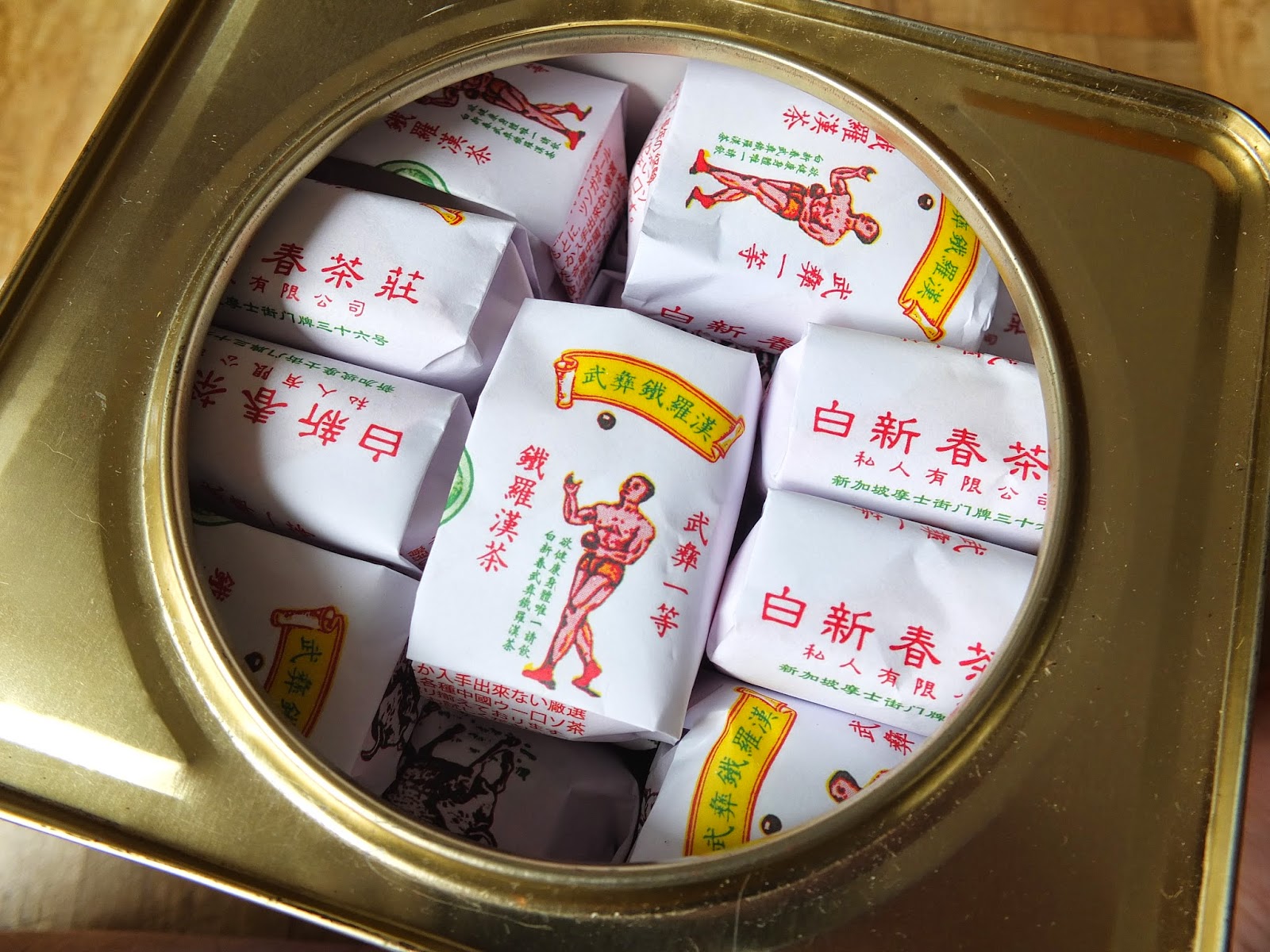There are a few Chinese teashops in SIngapore whose main business is in the supply of Chinese tea to restaurants and eateries in Singapore where Chinese tea is served. Local readers will know Chinese tea will normally be served at Chinese wedding banquets or company events when held at Chinese restaurants or hotel ballrooms.
Pek Sin Choon is located in 36 Mosque Street (Chinatown). Established in 1925, this company is the major supplier of Chinese tea to eating establishments. Most of the bak kut teh stalls (refers to pork rib soup) that offers Chinese tea will normally be carrying Pek Sin Choon supplied Chinese tea. I will devote a blog on such stalls later this year.
Koh Kian Huat Tea Merchant is another Chinese tea supplier. This company was founded in 1918 and is located in 531, Hong Lim Complex #02-38 (in Chinatown too).
I liked these 2 teashops as they are still continuing the tradition of packing their tea in small paper wrappers and packing them in a metal tin. As you will observed from the pix, a tin of tea will have 50 hand wrapped tea packets (12g per packet or 600g per tin). Oolong tea are usually packed in such tins and you have a choice of Tie Guan Yin, Shui Hsien or Tie Lo Han.
I purchased the Tie Lo Han oolong from these two shops. The Koh Kian Huat version was on the heavy roast side. Woody character with a mild sweet aftertaste. The Pek Sin Choon oolong roast levels borders between heavy and medium roast. It is more fresh tasting in character due to its lighter roast. I brewed these two teas during Chinese New Year last week and my guests even requested for a few oolong packets to bring home. A happy testimony of these tea.
Yes, readers. This is the Japanese tetsubin which has the rust issues inside the kettle. I will work to get this tetsubin operational again.










